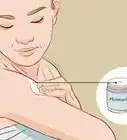This article was co-authored by wikiHow staff writer, Finn Kobler. Finn Kobler graduated from USC in 2022 with a BFA in Writing for Screen/Television. He is a two-time California State Champion and record holder in Original Prose/Poetry, a 2018 finalist for the Los Angeles Youth Poet Laureate, and he's written micro-budget films that have been screened in over 150 theaters nationwide. Growing up, Finn spent every summer helping his family's nonprofit arts program, Showdown Stage Company, empower people through accessible media. He hopes to continue that mission with his writing at wikiHow.
There are 7 references cited in this article, which can be found at the bottom of the page.
This article has been viewed 6,273 times.
Learn more...
Itching to get in the water, but have a fresh tattoo? It can be confusing trying to figure out when it’s safe to take a dip without damaging your new ink. But don’t worry. We’re here to dive into everything you need to know, from how long you should wait before swimming to waterproofing your tattoo to aftercare to everything in between!
Steps
Applying a Waterproof Dressing
-
1Wrap your tattoo with a waterproof bandage right before swimming. There is no way to fully waterproof a tattoo before it has fully healed. However, if swimming is unavoidable, the next best option is to cover your tattoo with a waterproof bandage like Sanaderm, Tegaderm, or medical retention tape. Make sure to apply the bandage immediately before swimming to avoid as much sweat buildup as possible beforehand.[2]
- Avoid swimming in oceans, lakes, and rivers altogether. While the chlorine in a swimming pool is still bad for a tattoo, the bacteria found in large freshwater bodies (especially coastal freshwater bodies) are far more dangerous and unpredictable.[3]
-
2Cover your seal with petroleum jelly or a petroleum jelly alternative. Because petroleum jelly is moisture-trapping, applying a thin layer of it on top of your waterproof bandage adds an extra layer of protection between the water and your tattoo.[4]
- If petroleum jelly is too harsh on your skin, coconut oil, cocoa butter, and other water-based lotions can offer the same protection. Your tattoo provider may also have recommendations.[5]
-
3Swim for no more than 1 hour. Make sure your tattoo is submerged in water for as little time as possible. Swimming or keeping your waterproof bandage on for too long increases the risk of infection and tattoo damage.[6]
-
4Remove your waterproof bandage as soon as you finish. To minimize bacteria spreading, remove your waterproof sealant as soon as you get out of the water. The longer you wait, the more you risk harm to your body and piece.[7]
-
5Rinse your tattoo with fresh water and mild soap. Once you’ve taken your waterproof bandage off, clean your tattoo gently but thoroughly. Rinse it with warm water. Then, massage in a fragrance-free, antibacterial soap.[8]
-
6Pat the affected skin with a towel. Once you’ve finished cleaning your tattoo, gently dry your skin by dabbing it down with a clean towel.[9]
- Make sure to pat your skin lightly with a towel. Do not rub!
-
7Apply aftercare cream. Once your skin is clean and dry, apply your tattoo aftercare cream or one of your tattoo provider’s recommended lotions or moisturizers.[10]
- If you’re having a hard time choosing a moisturizer or lotion, look for non-comedogenic and fragrance-free products. The milder, the better!
Caring for a New Tattoo
-
1Remove the tattoo bandage as directed by your tattoo artist. Your tattoo isn’t quite done once you’ve left the tattoo shop. Properly caring for your tattoo while your broken skin recovers is an important step in making sure your cool new ink develops as intended. Once you get home, remove the tattoo covering to prevent it from sticking to your skin.[11]
- Remove your tattoo bandage anywhere from 1 to 5 hours after your piece has been completed. Since every piece is different, talk to your tattoo provider for their advice on when they feel it’s the best time to peel the bandage off.
-
2Clean off the excess ink and blood. After you’ve taken off your tattoo bandage, immediately wash away the excess fluids with a clean, dry hand. Then, pat your skin dry with a towel and cover it with a protective layer of antibiotic ointment like bacitracin or Neosporin.[12]
- After 5 days, replace the antibiotic ointment with a fragrance-free body lotion.
-
3Wash your tattoo with a mild, antibacterial soap 3-4 times per day. Rinse your tattoo with warm water and use your hand to massage a fragrance-free, antibacterial soap into your skin 3 to 4 times a day for the first week. When you’re done, gently pat your skin with a towel and let the rest air dry.[13]
- Antibacterial soaps can be purchased online or at any major grocery store/pharmacy. Some tattoo shops even sell their recommended soap brands in their stores.
-
4Moisturize your tattoo 2-3 times a day. It’s common after a new tattoo for your skin to scab and start flaking. To keep the ink in the best condition, moisturize the affected area regularly with a tattoo aftercare cream.[14]
- Don’t over-moisturize! Overdoing it on the aftercare cream can clog your pores which will lead to breakouts and slow the healing process.
- The usual recommendation for applying aftercare cream is 2-3 times a day. However, this may vary depending on the piece. Listen to your tattoo provider for their regiment and cream recommendations.
- The best time to apply moisturizer on your tattoo is 5-10 minutes after it has been air dried after it’s cleaned.
-
5Allow your tattoo to scab and heal. While the first few weeks of flaking and scabbing can be itchy and unpleasant, don’t scratch at your tattoo. Let it heal organically.[15]
-
6Apply sunscreen. The sun’s UV rays will damage your tattoo. Apply a non-comedogenic, high-SPF sunblock to keep your tattoo’s ink from fading.[16]
-
7Wear loose-fitting clothes. Avoid tight clothes and nylons while your tattoo heals. It’s best to wear baggy, loose outfits for the first 2 weeks after receiving a new tattoo.[17]
-
8Be patient. We know it can feel like years waiting for your tattoo to heal properly, but trust us, it’s worth the wait. After about 4 weeks, once the skin around your ink has mended, your tattoo will look better than ever and be totally safe to swim with (and you won’t even need to waterproof it)!
References
- ↑ https://www.usms.org/fitness-and-training/articles-and-videos/articles/how-long-should-i-wait-to-swim-after-getting-a-tattoo
- ↑ https://www.usms.org/fitness-and-training/articles-and-videos/articles/how-long-should-i-wait-to-swim-after-getting-a-tattoo
- ↑ https://www.forbes.com/sites/ritarubin/2017/06/03/if-your-new-tattoo-hasnt-yet-healed-swimming-in-the-sea-could-be-deadly/?sh=579356215fb3
- ↑ https://clinicnearme.org/how-to-waterproof-a-tattoo-for-swimming/
- ↑ https://www.aad.org/public/everyday-care/skin-care-basics/tattoos/caring-for-tattooed-skin
- ↑ https://clinicnearme.org/how-to-waterproof-a-tattoo-for-swimming/
- ↑ https://clinicnearme.org/how-to-waterproof-a-tattoo-for-swimming/
- ↑ https://www.usms.org/fitness-and-training/articles-and-videos/articles/how-long-should-i-wait-to-swim-after-getting-a-tattoo
- ↑ https://clinicnearme.org/how-to-waterproof-a-tattoo-for-swimming/
- ↑ https://www.usms.org/fitness-and-training/articles-and-videos/articles/how-long-should-i-wait-to-swim-after-getting-a-tattoo
- ↑ https://uhs.umich.edu/bodyart
- ↑ https://city.milwaukee.gov/ImageLibrary/Groups/healthAuthors/CEH/PDFs/Tattoo_aftercare.pdf
- ↑ https://www.health.harvard.edu/blog/tattoos-and-infection-think-before-you-ink-201210125405
- ↑ https://city.milwaukee.gov/ImageLibrary/Groups/healthAuthors/CEH/PDFs/Tattoo_aftercare.pdf
- ↑ https://www.health.harvard.edu/blog/tattoos-and-infection-think-before-you-ink-201210125405
- ↑ https://uhs.umich.edu/bodyart
- ↑ https://city.milwaukee.gov/ImageLibrary/Groups/healthAuthors/CEH/PDFs/Tattoo_aftercare.pdf
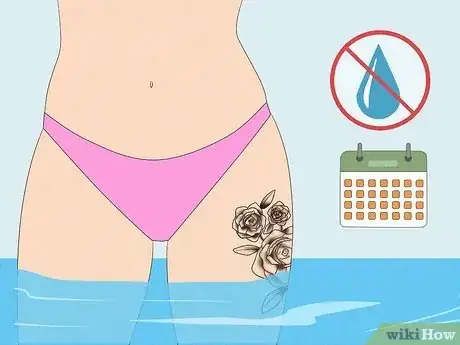
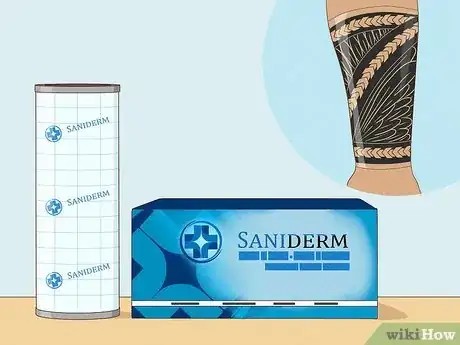
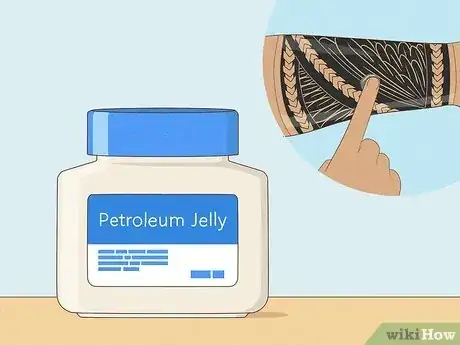

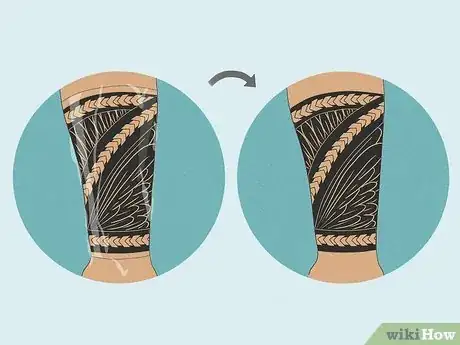
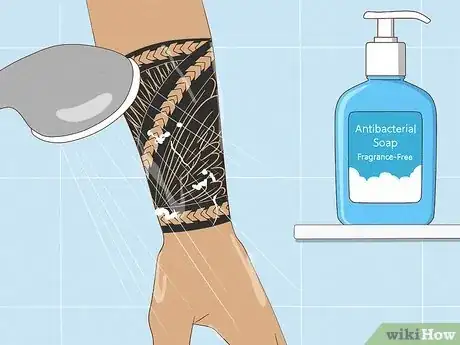
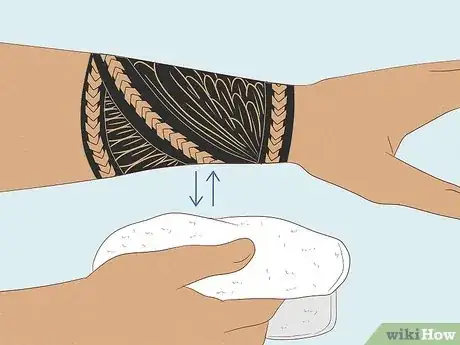
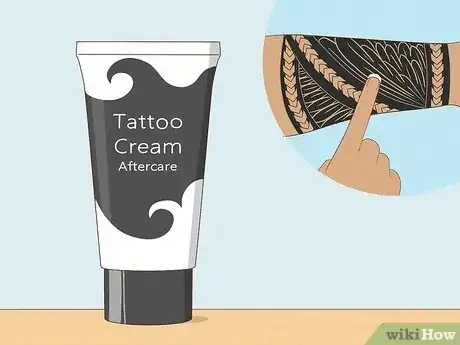
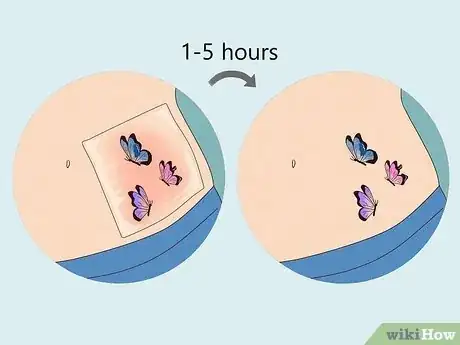

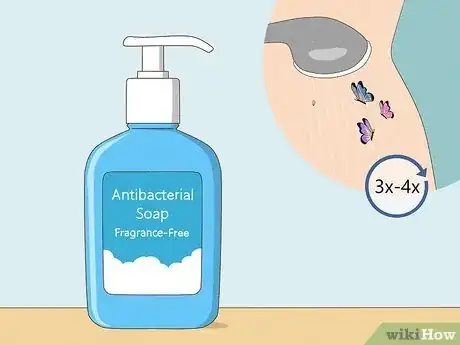
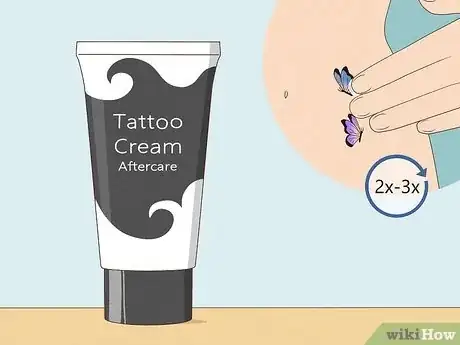
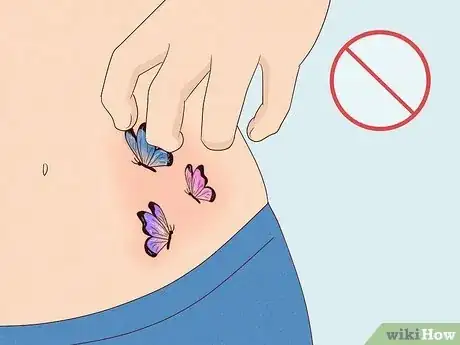
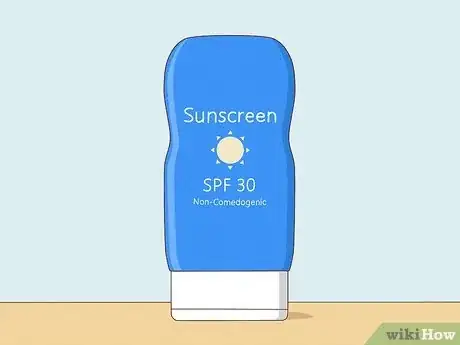



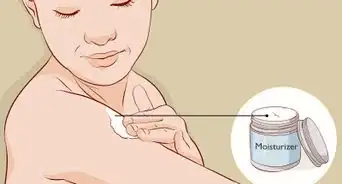




-Step-12-Version-3.webp)














